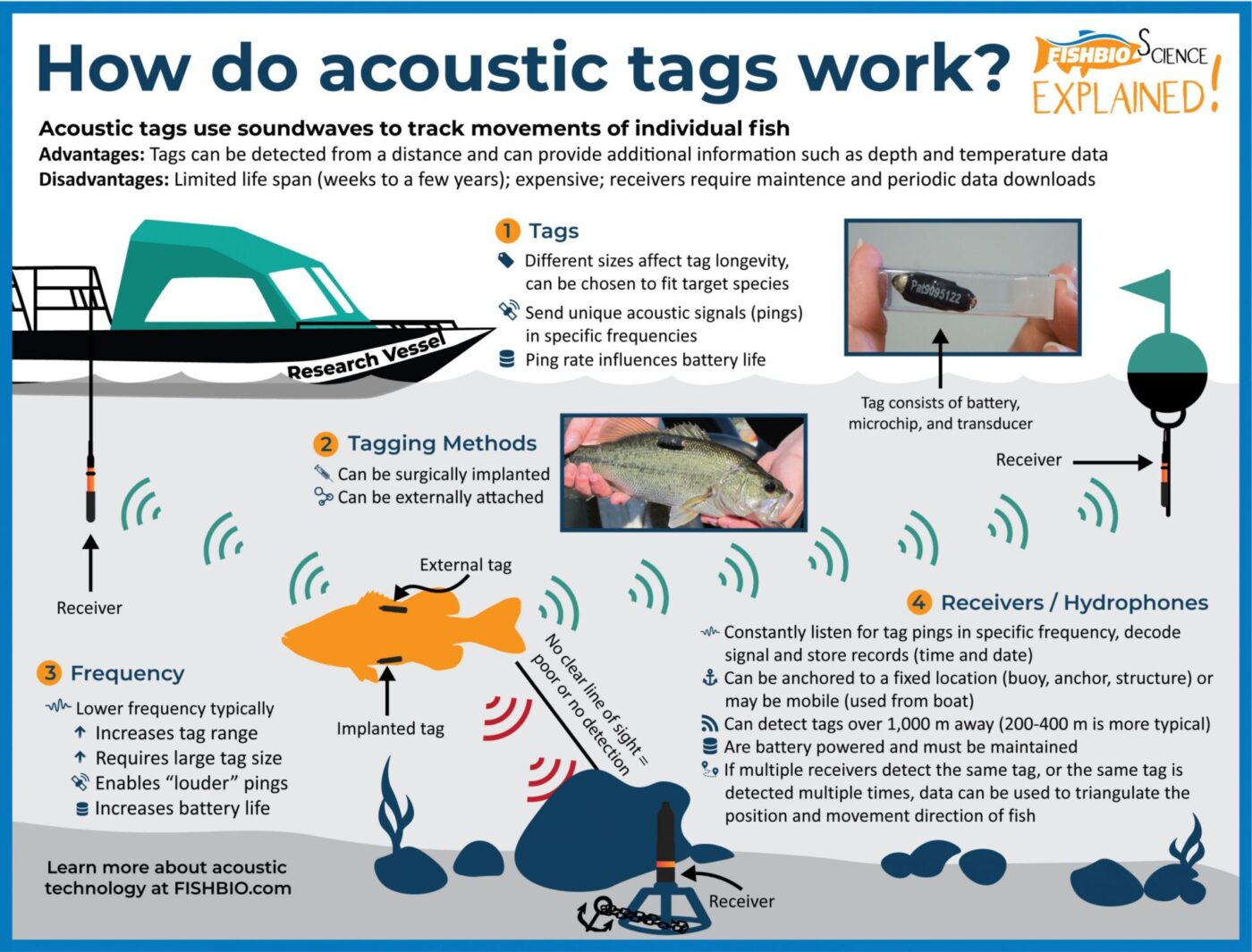Acoustic telemetry offers a way for scientists to track the underwater movements of fishes using sound. This technology incorporates two essential pieces of equipment: tags (which act like transmitters or beacons) and receivers (or listening devices, often referred to as hydrophones). Our infographic depicts the basic concept: the tag is implanted or attached to a fish, the fish is released, and the sound signal given off by the tag is detected by a hydrophone. Detection of tagged fishes provides information about fish movement, behavior, and survival.

Hydrophones can be stationary or mobile: stationary receivers can be mounted to structures or anchored in the environment, while mobile receivers are deployed from a moving boat to actively scan for tagged fish. Each tag emits a unique signal, which makes it possible to identify individual fish. When detected, the receiver records the unique tag identification number, the date, and a time stamp. A network of receivers (often called an array) can be used to reconstruct fish movement pathways and migration speed, and can even be used to pinpoint a fish’s exact location using triangulation.
Acoustic tags can be externally attached or surgically implanted in a fish. Some acoustic tags incorporate additional sensors to record depth, temperature, or predation events. Tags have a limited life expectancy that is constrained by battery size: smaller batteries can last for days to weeks, while larger batteries can last for months to years. Fish size influences the size of an acoustic tag that can be used without hindering fish movement. FISHBIO has participated in the surgical tagging of thousands of salmon smolts as well as regular recovery and data downloading from receivers as part of long-term acoustic telemetry survival studies in California’s Central Valley. We have also experimentally tested prototype predator detection acoustic tags in our fish lab, and are helping to facilitate the deployment of acoustic telemetry technology in Southeast Asia’s Mekong River Basin.
